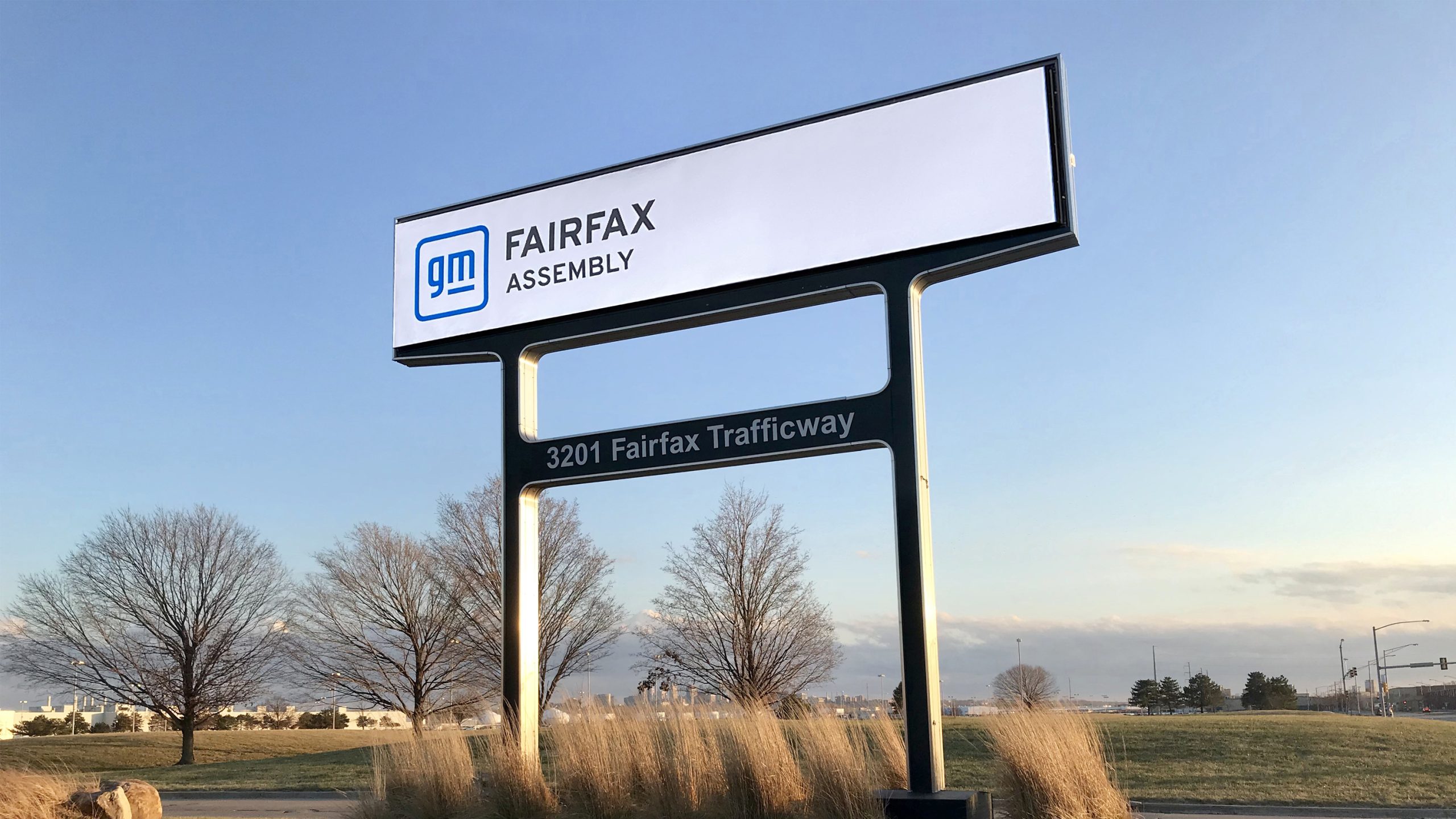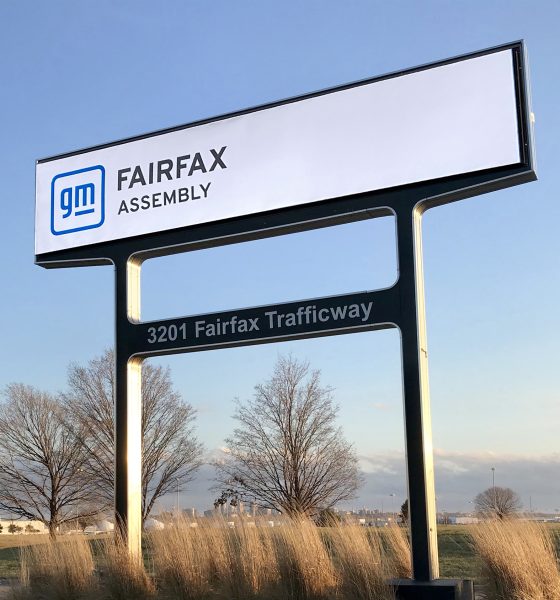General Motors (GM) has shut down a manufacturing plant in Kansas and laid off the site’s roughly 2,000 workers after the automaker stated plans to do so last week. The news comes as the latest amidst strikes from the United Auto Workers (UAW) union targeting Ford, GM and Stellantis.
Following the UAW strikes at a GM assembly plant in Wentzville, Missouri last Friday, the automaker said on Wednesday that it doesn’t have work available for its Fairfax, Kansas workers, according to NBC News. GM has also said it won’t be able to offer unemployment benefits to the workers “due to the specific circumstances of this situation.”
“The fundamental reality is that the UAW’s demands can be described in one word — untenable,” wrote GM President Mark Reuss in an op-ed for Detroit Free Press on Wednesday. “As the past has clearly shown, nobody wins in a strike. We have delivered a record offer. That is a fact.”
Roughly 12,700 workers from GM, Ford and Stellantis walked off the job after previous union contracts expired last Thursday. The UAW strikes have targeted key manufacturing plants, asking workers to leave the premises without any notice to affect the automakers’ larger supply chains.
Jeep, Chrysler and Dodge owner Stellantis announced plans to lay off 68 workers at an Ohio facility, warning of another 300 layoffs in Indiana if the situation does not improve.
Additional layoffs are happening at a Stellantis machining plant in Perrysburg, Ohio, outside of Toledo, due to “storage constraints.” The company predicts a similar situation at a transmission and casting plant in Kokomo, Indiana.
Ford also laid off around 600 employees at a plant in Wayne, Michigan.
Tesla’s Elon Musk invites UAW to hold a union vote “at their convenience”
UAW President Shawn Fain has warned that the union will broaden strikes on Friday if the automakers don’t make “serious progress” on creating a new contract. Roughly 150,000 workers total are represented by the UAW.
Currently, the UAW is asking for pay increases of between 36 and 40 percent over a four-year period, a 32-hour work week, significant changes to the time it takes to earn top wages and more. The automakers have offered contracts featuring roughly 20 percent wage hikes over four years.
Strikes have so far hit GM’s full-size van and midsize truck plant in Wentzville, a Ford Bronco SUV and Ranger midsize truck plant in Wayne, Michigan, and a Stellantis plant in Toledo, Ohio, which produces the Jeep Wrangler and Gladiator.
According to Reuters, the three automakers remained in a negotiation stand-off with the UAW on Wednesday, ahead of the union’s plans to escalate strikes to other facilities. Analysts think that the next wave of strikes could target production facilities building more profitable pickups, such as the Chevy Silverado from GM and the Dodge Ram from Stellantis.
Ford reached a deal to prevent a mass walkout of Canadian workers on Tuesday after the union Unifor threatened a strike of its roughly 5,600 workers across three plants in the country.
The agreement has still yet to be ratified by Unifor, and Ford Canada said it wouldn’t disclose details about the deal. However, it reportedly included improved wages and pensions along with added support for transitioning to electric vehicles (EVs).
While EV manufacturer Tesla isn’t unionized and is not directly involved with the strikes, transitioning to EVs has been a main concern for the unions, as EV production requires fewer employees. As such, the UAW seeks to increase workers’ stability amidst the EV transition.
Tesla only builds EVs, so unlike the “Big 3,” the automaker won’t have to phase out gas car production. Some predict that the strikes could benefit the EV maker, while others argue that ripple effects from the strikes could turn out to be a negative across the auto industry.
You can watch UAW President Shawn Fain’s update below, posted on Tuesday, in which he warns of the upcoming Friday deadline.
What are your thoughts? Let me know at zach@teslarati.com, find me on X at @zacharyvisconti, or send your tips to us at tips@teslarati.com.

Elon Musk
Elon Musk’s X will start using a Tesla-like software update strategy
The initiative seems designed to accelerate updates to the social media platform, while maintaining maximum transparency.

Elon Musk’s social media platform X will adopt a Tesla-esque approach to software updates for its algorithm.
The initiative seems designed to accelerate updates to the social media platform, while maintaining maximum transparency.
X’s updates to its updates
As per Musk in a post on X, the social media company will be making a new algorithm to determine what organic and advertising posts are recommended to users. These updates would then be repeated every four weeks.
“We will make the new 𝕏 algorithm, including all code used to determine what organic and advertising posts are recommended to users, open source in 7 days. This will be repeated every 4 weeks, with comprehensive developer notes, to help you understand what changed,” Musk wrote in his post.
The initiative somewhat mirrors Tesla’s over-the-air update model, where vehicle software is regularly refined and pushed to users with detailed release notes. This should allow users to better understand the details of X’s every update and foster a healthy feedback loop for the social media platform.
xAI and X
X, formerly Twitter, has been acquired by Elon Musk’s artificial intelligence startup, xAI last year. Since then, xAI has seen a rapid rise in valuation. Following the company’s the company’s upsized $20 billion Series E funding round, estimates now suggest that xAI is worth tens about $230 to $235 billion. That’s several times larger than Tesla when Elon Musk received his controversial 2018 CEO Performance Award.
As per xAI, the Series E funding round attracted a diverse group of investors, including Valor Equity Partners, Stepstone Group, Fidelity Management & Research Company, Qatar Investment Authority, MGX, and Baron Capital Group, among others. Strategic partners NVIDIA and Cisco Investments also continued support for building the world’s largest GPU clusters.
News
Tesla FSD Supervised wins MotorTrend’s Best Driver Assistance Award
The decision marks a notable reversal for the publication from prior years, with judges citing major real-world improvements that pushed Tesla’s latest FSD software ahead of every competing ADAS system.

Tesla’s Full Self-Driving (Supervised) system has been named the best driver-assistance technology on the market, earning top honors at the 2026 MotorTrend Best Tech Awards.
The decision marks a notable reversal for the publication from prior years, with judges citing major real-world improvements that pushed Tesla’s latest FSD software ahead of every competing ADAS system. And it wasn’t even close.
MotorTrend reverses course
MotorTrend awarded Tesla FSD (Supervised) its 2026 Best Tech Driver Assistance title after extensive testing of the latest v14 software. The publication acknowledged that it had previously criticized earlier versions of FSD for erratic behavior and near-miss incidents, ultimately favoring rivals such as GM’s Super Cruise in earlier evaluations.
According to MotorTrend, the newest iteration of FSD resolved many of those shortcomings. Testers said v14 showed far smoother behavior in complex urban scenarios, including unprotected left turns, traffic circles, emergency vehicles, and dense city streets. While the system still requires constant driver supervision, judges concluded that no other advanced driver-assistance system currently matches its breadth of capability.
Unlike rival systems that rely on combinations of cameras, radar, lidar, and mapped highways, Tesla’s FSD operates using a camera-only approach and is capable of driving on city streets, rural roads, and freeways. MotorTrend stated that pure utility, the ability to handle nearly all road types, ultimately separated FSD from competitors like Ford BlueCruise, GM Super Cruise, and BMW’s Highway Assistant.
High cost and high capability
MotorTrend also addressed FSD’s pricing, which remains significantly higher than rival systems. Tesla currently charges $8,000 for a one-time purchase or $99 per month for a subscription, compared with far lower upfront and subscription costs from other automakers. The publication noted that the premium is justified given FSD’s unmatched scope and continuous software evolution.
Safety remained a central focus of the evaluation. While testers reported collision-free operation over thousands of miles, they noted ongoing concerns around FSD’s configurable driving modes, including options that allow aggressive driving and speeds beyond posted limits. MotorTrend emphasized that, like all Level 2 systems, FSD still depends on a fully attentive human driver at all times.
Despite those caveats, the publication concluded that Tesla’s rapid software progress fundamentally reshaped the competitive landscape. For drivers seeking the most capable hands-on driver-assistance system available today, MotorTrend concluded Tesla FSD (Supervised) now stands alone at the top.
News
Elon Musk’s Grokipedia surges to 5.6M articles, almost 79% of English Wikipedia
The explosive growth marks a major milestone for the AI-powered online encyclopedia, which was launched by Elon Musk’s xAI just months ago.

Elon Musk’s Grokipedia has grown to an impressive 5,615,201 articles as of today, closing in on 79% of the English Wikipedia’s current total of 7,119,376 articles.
The explosive growth marks a major milestone for the AI-powered online encyclopedia, which was launched by Elon Musk’s xAI just months ago. Needless to say, it would only be a matter of time before Grokipedia exceeds English Wikipedia in sheer volume.
Grokipedia’s rapid growth
xAI’s vision for Grokipedia emphasizes neutrality, while Grok’s reasoning capabilities allow for fast drafting and fact-checking. When Elon Musk announced the initiative in late September 2025, he noted that Grokipedia would be an improvement to Wikipedia because it would be designed to avoid bias.
At the time, Musk noted that Grokipedia “is a necessary step towards the xAI goal of understanding the Universe.”
Grokipedia was launched in late October, and while xAI was careful to list it only as Version 0.1 at the time, the online encyclopedia immediately earned praise. Wikipedia co-founder Larry Sanger highlighted the project’s innovative approach, noting how it leverages AI to fill knowledge gaps and enable rapid updates. Netizens also observed how Grokipedia tends to present articles in a more objective manner compared to Wikipedia, which is edited by humans.
Elon Musk’s ambitious plans
With 5,615,201 total articles, Grokipedia has now grown to almost 79% of English Wikipedia’s article base. This is incredibly quick, though Grokipedia remains text-only for now. xAI, for its part, has now updated the online encyclopedia’s iteration to v0.2.
Elon Musk has shared bold ideas for Grokipedia, including sending a record of the entire knowledge base to space as part of xAI’s mission to preserve and expand human understanding. At some point, Musk stated that Grokipedia will be renamed to Encyclopedia Galactica, and it will be sent to the cosmos.
“When Grokipedia is good enough (long way to go), we will change the name to Encyclopedia Galactica. It will be an open source distillation of all knowledge, including audio, images and video. Join xAI to help build the sci-fi version of the Library of Alexandria!” Musk wrote, adding in a later post that “Copies will be etched in stone and sent to the Moon, Mars and beyond. This time, it will not be lost.”










